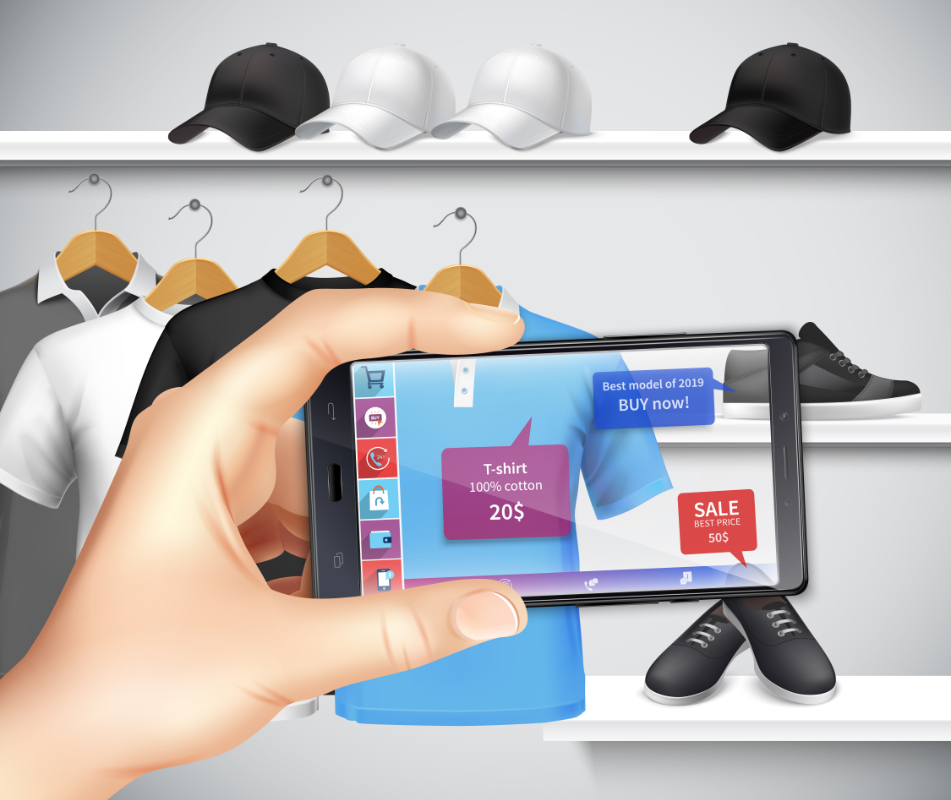
How to Adopt Augmented Reality in Retail?
Augmented reality is becoming a must-have technology across prominent industries. It is already turned to be an essential tech stack for resolving critical industrial problems. The market value of augmented reality technologies is estimated to hit $72.7 Billion by 2024.
Today, from the retail industry to training & education to field service, augmented reality the changing the way the world has been solving challenges. Plus, the surge in smartphone adoption and high-speed internet enabled the outburst of innovation in augmented reality development.
In this blog, let’s focus on the impact of augmented reality technologies in the retail industry.
Understanding Augmented Reality
Augmented reality is a dimension that technology can change how we view and understand the world around us. AR technology is very useful in various industries, but first, we need to know what augmented reality is and how it redefines our perceptions.
There are two primary modes through which we can experience augmented reality technology. The first is web-based AR platforms, and the other is augmented reality applications.
In the web-based augmented reality application, users can experience AR via the web browser. In AR application, the experience would be the same, but the delivery mode would be through a downloaded AR application.
If we delve a little deeper to understand the fundamental components in creating an augmented reality environment, in that case, it is importantly two elements, to name- a 3D model and a marker. The 3D model could be static or animated, but it should be optimized for the device using. The real-world object that the 3D product model anchored is the marker.
So, based on the speed to detect the marker, the device will augment the object properly. Plus, based on the frames per second, the UX will improve. However, there is another mode to create augmented reality called markerless augmented reality
What is Mark-based Augmented Reality?
In marker-based AR, through a mobile application, the users are allowed to scan the physical markers to render the preferred model of the augmented content. It can be 2D/3D models, videos, animations, and audios over different business sectors. Retail, game, and medical practice sectors are the most beneficiaries of marker-based augmented reality.
It helps to create an interactive display space for the merchants to the users. The marker would be a QR code, image, face. However, a well-designed marker-based AR content is intuitive, easy to use, and stable.
Retailers can make use of market-based augmented reality in diversified methods. They can offer a closer product experience for the customers. It helps to create an interactive environment and engage the customers experientially. Thereby, customers can make informed purchase decisions quicker. Above all, by giving an intuitive shopping experience, retailers can stay ahead in the market.
What is Markerless (Location-based) Augmented Reality?
In markerless augmented reality, a specific marker is not required to create the augmented content. It used SLAM (simultaneous localization and mapping), digital compass, and few other tech-oriented drivers.
However, this is a tough practice in the retails sector to implement. This method demands the program to anchor the object anywhere the user wishes to augment the content. It can be placing a sofa on a corner to trying a painting on the wall.
This form of augmenting content anywhere needs native AR libraries such as ARCore, ARKit, etc. Still, there are a lot of limitations in location-based AR, but some static models are able to display. But this way of augmenting contents gives more freedom, mobility, and greater stability.
However, based on the users’ augmented reality use case, they can select the most suitable option. Both of the modes have their pro’s and cons’s. For offering much better interactivity and immerse the customers’ markerless AR works better for businesses.
Benefits of Augmented Reality in Retail?
Retail businesses are increasingly moving to online modes. Despite the limitations of the virtual shopping experience, customers demand a better product experience for making a fast and satisfying purchase decision.
Customer surveys reveal that around 50% of customers prefer to shop with a vendor who offers an augmented reality shopping experience. Moreover, the new-normal demand the retailers to deliver a real-like store experience to the customers while they follow social distancing.
Hence, augmented reality opened a new channel to immerse the customers and give an interactive shopping experience even from a distance. Also, customers could test the products and services in a real-life environment easily.
How to Choose the Best Augmented Reality Implementation Model?
Based on the comparative study of AR native apps and AR web-based applications, native apps showed up with better performance. The key difference between the two is the requirement of application installation for native app-based AR implementation, and the other doesn’t need a downloaded app but works well through the browser.
This AR through native apps demands the customer to stop by and install the app, but web-based AR gives an easy and faster AR experience. And the AR experience delivered through both modes varies.
Retail giants are already on a spree to adopt AR across their business verticals and provide a better customer experience. If you are thinking about how to implement augmented reality in your retail business, please reach out to us.





Comments
No comments yet.